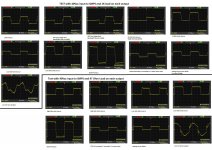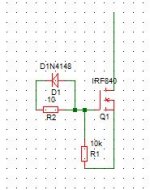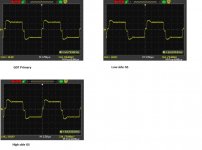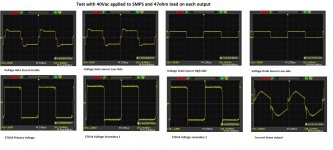zeus_threat
Member
I've been investigating on the inductance side and back calculating AL cores, for the CFL toroids they range from 5000 to more than 12000 the on am using is at 7346. However between calculating turns and inductance and winding and measuring inductance there is a difference, more turns have to be added in practice.
For the EI33 core it has an AL of 861 but i have an cleaned ETD34 handy that has an AL of 3885 I will give that core a try.
According to calculations and assuming i would have needed an inductance of 2.2mH on my main core, i would need 50 turns instead of 40. With 40 turns i have an inductance of 1.5mH. I will unwind and rebuild that transformer. Can anybody comment on this thanks
For the EI33 core it has an AL of 861 but i have an cleaned ETD34 handy that has an AL of 3885 I will give that core a try.
According to calculations and assuming i would have needed an inductance of 2.2mH on my main core, i would need 50 turns instead of 40. With 40 turns i have an inductance of 1.5mH. I will unwind and rebuild that transformer. Can anybody comment on this thanks






